CAMOUFLAGED BY IGNORANCE:
AUTO IMMUNE DISEASES
What would have happened if there was a fight between you and yourself?
General Overview
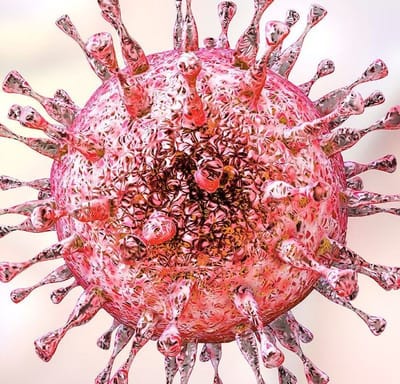
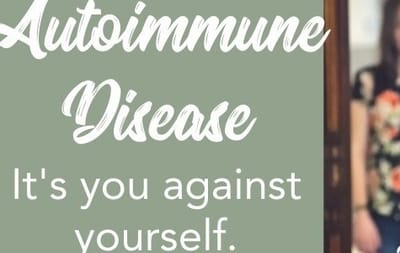
Auto-immune diseases are conditions whereby "the body fights itself." In that, the immune system mistakenly starts to attack healthy cells and tissues - and fails to shut off the attack. Ordinarily, the immune system should rather fight invading cells and not the bodies own components, but well as said before, its a mistake.
The cause of this immune response; mistake for now is unknown. Some researchers suspect these diseases might be caused by environmental factors whiles others say diet might play a role but one thing is for sure; they are neither contracted nor contagious.
Do diseases like psoriasis and rheumatic fever ring a bell?
Some other examples of these diseases include, Lupus, Addison's disease, Graves disease, Hashimoto's thyroiditis, Pernicious anemia, Rheumatoid arthritis etc.
The following pages of this website will go more into depth about four of these diseases, but before we look at those four, let's delve a bit into where it probably all starts; in our bodies, through to our organs, into our organelles, down in our cells. Let's take a look at genes and immunity.
Genes and immunity
There is a reason why many people look like their family members and not their friends. Its something in our bodies; something in our cells; in all 37.2 trillion of them; molecules called genes. They are the basic units of hereditary; which is the passing down of certain traits from generation to generation.
Genes determine the traits that are passed on from generation to generation; some examples of these traits include eye color, height and skin tone.
These genes are contained within thread-like structures called chromosomes. Almost everyone has twenty-three pairs of these chromosomes; one pair from the mother and the other from the father; that explains why we share bodily features with both our moms and dad's.
Immunity on the other hand, are the bodies defensive mechanisms. It is how the body defends our organs from getting
destroyed or affected from parasites and other harmful substances that may find their way into our bodies.
The immune system; protects us against infectious agents. What this system does it to coordinate immune responses by bringing forth two types of cells, phagocytes and lymphocytes who work hand in hand to defend the body when its attacked.
The phagocytes are more of the "immediate action takers", and so almost as soon as they come into contact with the pathogens; which are disease causing organisms, they deal with them. They do this by engulfing; sort of "eating" them, by taking them in whole and destroying them.
Lymphocytes work in an almost opposite way; by producing some substances known as antibodies to fight the pathogens; to be able to do this they must first be able to recognize some specific molecules on the surface of the pathogens; antigens to be able to know which specific antibody to produce.
In that, we can conclude that one main difference between phagocytes and lymphocytes are that, phagocytes generate same immune responses for all antigens whiles lymphocytes generate different immune responses for different antigens.
Genes determine the traits that are passed on from generation to generation; some examples of these traits include eye color, height and skin tone.
These genes are contained within thread-like structures called chromosomes. Almost everyone has twenty-three pairs of these chromosomes; one pair from the mother and the other from the father; that explains why we share bodily features with both our moms and dad's.
Immunity on the other hand, are the bodies defensive mechanisms. It is how the body defends our organs from getting
destroyed or affected from parasites and other harmful substances that may find their way into our bodies.
The immune system; protects us against infectious agents. What this system does it to coordinate immune responses by bringing forth two types of cells, phagocytes and lymphocytes who work hand in hand to defend the body when its attacked.
The phagocytes are more of the "immediate action takers", and so almost as soon as they come into contact with the pathogens; which are disease causing organisms, they deal with them. They do this by engulfing; sort of "eating" them, by taking them in whole and destroying them.
Lymphocytes work in an almost opposite way; by producing some substances known as antibodies to fight the pathogens; to be able to do this they must first be able to recognize some specific molecules on the surface of the pathogens; antigens to be able to know which specific antibody to produce.
In that, we can conclude that one main difference between phagocytes and lymphocytes are that, phagocytes generate same immune responses for all antigens whiles lymphocytes generate different immune responses for different antigens.
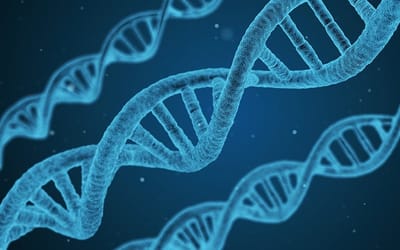
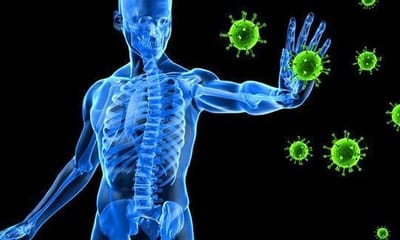
Link to video on genes and immunity
Disease 1: Type 1 Diabetes
Type 1 diabetes also known as insulin-dependent diabetes is a life-long disease, in which the pancreas produces no insulin.
Insulin is a hormone; that is needed to allow sugar(glucose) to enter the body cells to produce energy.
So in the instance where someone has Type 1 diabetes, the immune system mistakenly destroys beta cells; insulin producing cells in your pancreas. That's what makes it an auto-immune condition.
When this happens, the body can't process glucose and so the sugars; glucose are left to circulate in your blood and that's how come there is high sugar content in the blood .
As we all know there are two types of diabetes; Type 1 and Type 2.; both quite different from each other. Take type 2 diabetes for example; here the body produces insulin, but its either too little or the body can't recognize and use the insulin properly; insulin resistance, but with Type 1; there is no insulin at all. Usually, type 2 diabetes is often associated with excess body weight, whiles Type 1 is not associated with this.
Did you also know that, type 2 diabetes affects about 90% percent more people than Type 1.
....Maybe Type 1 its not so bad after all.
One other difference between the two types is that for type 1 diabetes, the symptoms appear in shorter order; more quickly.
Some of these symptoms include:
- Excessive thirst and hunger
-Blurred vision
-Fatigue
-Unexplained weight loss
- Crankiness and mood changes etc
For many autoimmune diseases, the symptoms cross-relate and this makes it quite difficult to diagnose which particular A.I.D it is.
Sadly enough, the exact cause of type 1 diabetes is unknown and the cure in conjunction as well. Modern day research points out the cause to most probably be related to our genes and to environmental factors also. Exposure to viruses is also being considered as one of the causes.
In spite of this, there is still hope for people who have Type 1 diabetes. Their bodies lack insulin but now insulin is being produced externally; outside of the body and so they can be prescribed insulin, which they will inject themselves daily with . This is definitely stressful and painful and so they can try another alternative; using an insulin pump. For as long as the insulin is getting into their bodies, they are good to go.
All in all, people with type 1 diabetes and any other A.I.D can live a long, happy life, they just need to know well enough about their condition and how they can work around it.
Insulin is a hormone; that is needed to allow sugar(glucose) to enter the body cells to produce energy.
So in the instance where someone has Type 1 diabetes, the immune system mistakenly destroys beta cells; insulin producing cells in your pancreas. That's what makes it an auto-immune condition.
When this happens, the body can't process glucose and so the sugars; glucose are left to circulate in your blood and that's how come there is high sugar content in the blood .
As we all know there are two types of diabetes; Type 1 and Type 2.; both quite different from each other. Take type 2 diabetes for example; here the body produces insulin, but its either too little or the body can't recognize and use the insulin properly; insulin resistance, but with Type 1; there is no insulin at all. Usually, type 2 diabetes is often associated with excess body weight, whiles Type 1 is not associated with this.
Did you also know that, type 2 diabetes affects about 90% percent more people than Type 1.
....Maybe Type 1 its not so bad after all.
One other difference between the two types is that for type 1 diabetes, the symptoms appear in shorter order; more quickly.
Some of these symptoms include:
- Excessive thirst and hunger
-Blurred vision
-Fatigue
-Unexplained weight loss
- Crankiness and mood changes etc
For many autoimmune diseases, the symptoms cross-relate and this makes it quite difficult to diagnose which particular A.I.D it is.
Sadly enough, the exact cause of type 1 diabetes is unknown and the cure in conjunction as well. Modern day research points out the cause to most probably be related to our genes and to environmental factors also. Exposure to viruses is also being considered as one of the causes.
In spite of this, there is still hope for people who have Type 1 diabetes. Their bodies lack insulin but now insulin is being produced externally; outside of the body and so they can be prescribed insulin, which they will inject themselves daily with . This is definitely stressful and painful and so they can try another alternative; using an insulin pump. For as long as the insulin is getting into their bodies, they are good to go.
All in all, people with type 1 diabetes and any other A.I.D can live a long, happy life, they just need to know well enough about their condition and how they can work around it.
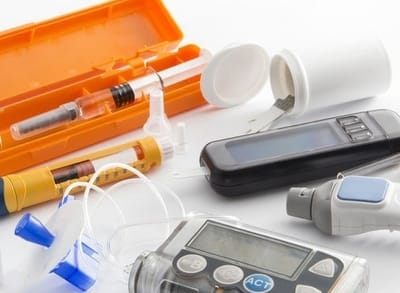
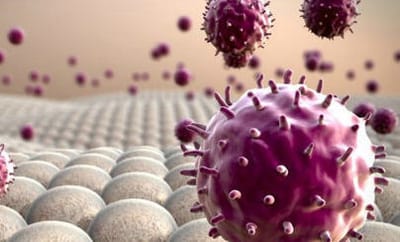
Disease 2 : Alopecia
By now you should have a fair idea on what Type 1 Diabetes is.
Now let's head into the second of the three diseases; Alopecia Areata popularly referred to as Alopecia.
Alopecia Areata; also known as spot baldness is an auto-immune condition that causes hair to fall out in small patches; sometimes unnoticeable. In the case of alopecia, the hair follicles are attacked, causing hair to fall out.
The quantity of hair loss differs from person to person. In some people, the hair lost comes back and sometimes even for good but in others the hair only keeps falling out until all the hair is lost.
Some people along the line develop, Alopecia areata totalis, loss of hair on their head only or in an even worse situation, Alopecia areata universalis, which causes them to lose hair on their entire body, not to worry; this is rare.
Did you know alopecia areata could come on at any age, but is most prevalent in younger children?
This is quite unfortunate, but as it is, they are auto-immune conditions so prevention is not even an option, likewise it can't be cured, but it can be managed and here are some symptoms to look out for:
- Hair falling out in small patches on the scalp.
- Noticing clumps of hair on your pillow or in the shower
Thankfully, there are both natural and medical treatments that can help to restore the lost hair and faster too.
Some examples of common medical treatments include ; steroid injections, Minoxidil(Rogaine); a very popular medication, light therapy etc.
For those who would prefer natural treatment methods, some available options include, aromatherapy, acupuncture and probiotics. Be sure to see a doctor to check these options out.
Some example of other types of alopecia areata, are Ophiasis alopecia and diffuse alopecia areata. But the thing is, hair loss doesn't necessarily mean you have alopecia, but with family history of the condition or any other A.I.D, there is a higher chance that the condition could be alopecia.
In spite of this, having alopecia isn't the end of the world; remember true beauty lies within.
Now let's head into the second of the three diseases; Alopecia Areata popularly referred to as Alopecia.
Alopecia Areata; also known as spot baldness is an auto-immune condition that causes hair to fall out in small patches; sometimes unnoticeable. In the case of alopecia, the hair follicles are attacked, causing hair to fall out.
The quantity of hair loss differs from person to person. In some people, the hair lost comes back and sometimes even for good but in others the hair only keeps falling out until all the hair is lost.
Some people along the line develop, Alopecia areata totalis, loss of hair on their head only or in an even worse situation, Alopecia areata universalis, which causes them to lose hair on their entire body, not to worry; this is rare.
Did you know alopecia areata could come on at any age, but is most prevalent in younger children?
This is quite unfortunate, but as it is, they are auto-immune conditions so prevention is not even an option, likewise it can't be cured, but it can be managed and here are some symptoms to look out for:
- Hair falling out in small patches on the scalp.
- Noticing clumps of hair on your pillow or in the shower
Thankfully, there are both natural and medical treatments that can help to restore the lost hair and faster too.
Some examples of common medical treatments include ; steroid injections, Minoxidil(Rogaine); a very popular medication, light therapy etc.
For those who would prefer natural treatment methods, some available options include, aromatherapy, acupuncture and probiotics. Be sure to see a doctor to check these options out.
Some example of other types of alopecia areata, are Ophiasis alopecia and diffuse alopecia areata. But the thing is, hair loss doesn't necessarily mean you have alopecia, but with family history of the condition or any other A.I.D, there is a higher chance that the condition could be alopecia.
In spite of this, having alopecia isn't the end of the world; remember true beauty lies within.
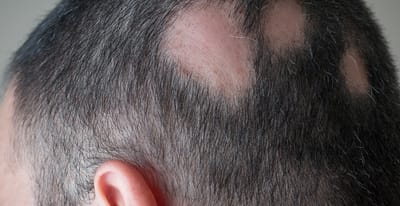
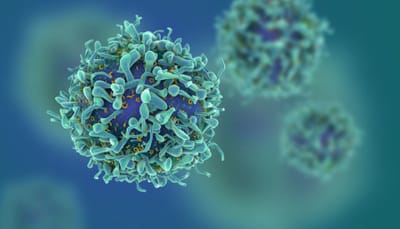
Disease 3: Vitiligo
This autoimmune disease primarily affects the skin but can also affect hair and the inside of the mouth...
Let's move on to the third disease this website is about; vitiligo.
Vitiligo is a chronic skin condition that causes loss of skin color in patches. The total area of skin that is affected differs from person to person and can range from smaller patches; the size of a lime or larger ones the size of a lemon.
It is one of the many auto-immune conditions and in this scenario, a pigment in the skin called melanin ceases to be produced. This is as a result of a mistake attack on the melanocytes; melanin producing cells by the immune system.
Did you know that vitiligo affects 70 million people across the globe; not pertaining to a particular race, ethnic group or gender?
Although this looks like something to have qualms about, this is not necessarily so. Truth of the matter is, vitiligo just like any other autoimmune condition is not contracted neither is it contagious but, the real issue comes with the stigma that is enough to reduce people's self-esteem and general psychological well being. The stigma conforms them to a "nut shell" and they find it very difficult to come out and show the world what they are truly made of.
Modern day research points to factors such as stress and sunburn as vitiligo triggering factors, though this theory is yet to be proven.
Vitiligo just like any other autoimmune disease, has no cure for now but one thing is for sure; having vitiligo doesn't make you any less better or beautiful than any other person out there. It makes you different; unique to be precise.
"Beauty isn't in the face; beauty is a light in the heart"
Let's move on to the third disease this website is about; vitiligo.
Vitiligo is a chronic skin condition that causes loss of skin color in patches. The total area of skin that is affected differs from person to person and can range from smaller patches; the size of a lime or larger ones the size of a lemon.
It is one of the many auto-immune conditions and in this scenario, a pigment in the skin called melanin ceases to be produced. This is as a result of a mistake attack on the melanocytes; melanin producing cells by the immune system.
Did you know that vitiligo affects 70 million people across the globe; not pertaining to a particular race, ethnic group or gender?
Although this looks like something to have qualms about, this is not necessarily so. Truth of the matter is, vitiligo just like any other autoimmune condition is not contracted neither is it contagious but, the real issue comes with the stigma that is enough to reduce people's self-esteem and general psychological well being. The stigma conforms them to a "nut shell" and they find it very difficult to come out and show the world what they are truly made of.
Modern day research points to factors such as stress and sunburn as vitiligo triggering factors, though this theory is yet to be proven.
Vitiligo just like any other autoimmune disease, has no cure for now but one thing is for sure; having vitiligo doesn't make you any less better or beautiful than any other person out there. It makes you different; unique to be precise.
"Beauty isn't in the face; beauty is a light in the heart"
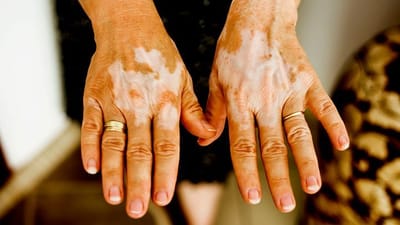
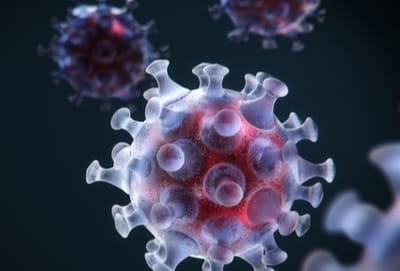
Disease 4: Celiac disease
Let's delve into the fourth disease; celiac disease.
Celiac disease, also known as Celiac sprue or Gluten-sensitive enteropathy is a chronic disease. It happens as a result of the immune system overreacting to gluten that has made its way into the body and into the small intestine. This is a mistake; and this is what makes it autoimmune.
For people with celiac disease, gluten's presence in the body can be very catastrophic; as over time the reaction damages the lining of the small intestine; the villi and prevents it from absorbing some nutrients; malabsorption.
Malabsorption can affect growth and development in children, whiles the intestinal damage can lead to other equally problematic conditions such as anemia and dermatitis herpetiformis.( an itchy, blistery rash)
As it's an autoimmune condition, there is no prevention likewise a cure. Diagnosing celiac disease can take quite a long time; as the symptoms are like that of other diseases; such as IBS(Irritable Bowel Syndrome) and lactose intolerance.
Symptoms such as:
" The strength to do and be; can sometimes be found within"
Celiac disease, also known as Celiac sprue or Gluten-sensitive enteropathy is a chronic disease. It happens as a result of the immune system overreacting to gluten that has made its way into the body and into the small intestine. This is a mistake; and this is what makes it autoimmune.
For people with celiac disease, gluten's presence in the body can be very catastrophic; as over time the reaction damages the lining of the small intestine; the villi and prevents it from absorbing some nutrients; malabsorption.
Malabsorption can affect growth and development in children, whiles the intestinal damage can lead to other equally problematic conditions such as anemia and dermatitis herpetiformis.( an itchy, blistery rash)
As it's an autoimmune condition, there is no prevention likewise a cure. Diagnosing celiac disease can take quite a long time; as the symptoms are like that of other diseases; such as IBS(Irritable Bowel Syndrome) and lactose intolerance.
Symptoms such as:
- Diarrhea
- Constipation
- Weight loss
- Fatigue
- Foul-smelling stool ;are some of the things one might experience, if celiac disease might be lurking in the body.
" The strength to do and be; can sometimes be found within"
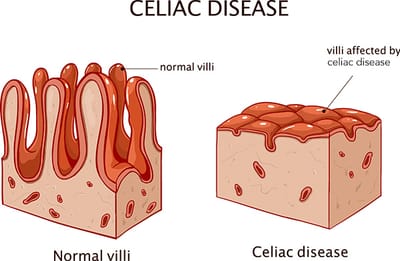
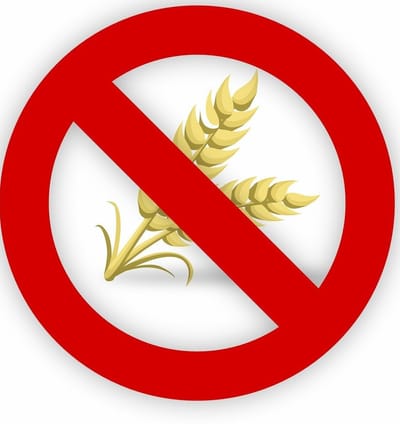
Autoimmune disease figures around the world
The future of autoimmune disease.
The recently introduced thesis, about a gene suspected to be the underlying cause behind the immune response, which causes autoimmune conditions, could be the road to finding the cure that everyone has long awaited.
The gene in question, which is called the VGLL3 gene; vestigial-like family member 3 gene, per their research, seems to be the regulator of immune response genes. These genes are said to be more common in women and is being suggested to be the reason why women are more prone to autoimmune disease.
Research being conducted on these transgenic mice, has revealed that having excess VGLL3 genes in skin cells pushes the immune system into overdrive; which leads to the self-attacking immune response. The scientists already proved that having autoimmune conditions like lupus; causes genes of similar expressions in the body to alter. Testing this theory on the mice, they realized that the increase in VGLL3 , wreaked havoc in the mice. Their skin became scaly and raw and the mice also produced antibodies against their own tissues. Some of these antibodies the mice produced are similar, to those that can destroy the kidneys of lupus patients.
Well, there is certainly hope for anyone one out there who might have autoimmune disease and is going through so much.
"If the results confirm a hypothesis, you have made a discovery'
If the results are contrary to the hypothesis, you have made a discovery"- Enrico Fermi
" The joy of discovery, is certainly the loveliest that the mind of man can ever feel."-Claude Bernard
The gene in question, which is called the VGLL3 gene; vestigial-like family member 3 gene, per their research, seems to be the regulator of immune response genes. These genes are said to be more common in women and is being suggested to be the reason why women are more prone to autoimmune disease.
Research being conducted on these transgenic mice, has revealed that having excess VGLL3 genes in skin cells pushes the immune system into overdrive; which leads to the self-attacking immune response. The scientists already proved that having autoimmune conditions like lupus; causes genes of similar expressions in the body to alter. Testing this theory on the mice, they realized that the increase in VGLL3 , wreaked havoc in the mice. Their skin became scaly and raw and the mice also produced antibodies against their own tissues. Some of these antibodies the mice produced are similar, to those that can destroy the kidneys of lupus patients.
Well, there is certainly hope for anyone one out there who might have autoimmune disease and is going through so much.
"If the results confirm a hypothesis, you have made a discovery'
If the results are contrary to the hypothesis, you have made a discovery"- Enrico Fermi
" The joy of discovery, is certainly the loveliest that the mind of man can ever feel."-Claude Bernard
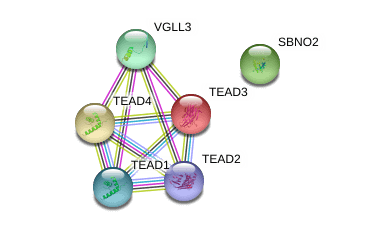
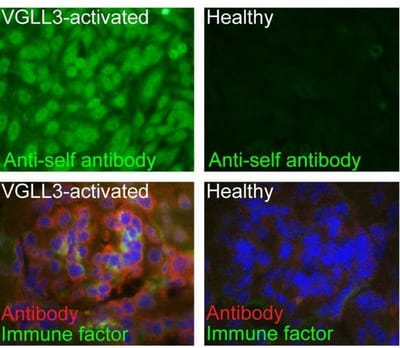
Success stories
Message to you
Referrals/ Sources
I believe this website has been able to fully serve its purpose on spreading awareness on autoimmune diseases. Below are some very awesome and credible websites that go further into the concepts of autoimmune diseases and many other diseases.
Feel free to check them out and share with your friends and family as well.
https://www.healthline.com/
https://www.mayoclinic.org/
https://www.webmd.com/
https://www.medicinenet.com/script/main/hp.asp
https://www.medicalnewstoday.com/
This is also the link to the website of an amazing autoimmune disease initiative, right here in Ghana. I would encourage that you try and find out the activities they engage in and see how best you can, support them in cash or kind.
" You will receive abundance for your giving; the more you give, the more you will have."
https://trighana.com/
Feel free to check them out and share with your friends and family as well.
https://www.healthline.com/
https://www.mayoclinic.org/
https://www.webmd.com/
https://www.medicinenet.com/script/main/hp.asp
https://www.medicalnewstoday.com/
This is also the link to the website of an amazing autoimmune disease initiative, right here in Ghana. I would encourage that you try and find out the activities they engage in and see how best you can, support them in cash or kind.
" You will receive abundance for your giving; the more you give, the more you will have."
https://trighana.com/
Glossary
- Gene:The basic unit of heredity; section of DNA that are in charge of different functions like making proteins.
- Chromosomes: Strand of DNA encoded with genes. Humans usually have 23 pairs of these.
- DNA: Short for deoxyribonucleic acid, are the molecules that contain the genetic code of organisms.
- Immunity:The ability of the body to defend itself from "foreign bodies". There are two types; innate; which does not give long term immunity and adaptive; which gives long term immunity against specific pathogens.
- Pathogens: A disease causing organism.
- Phagocytes:White blood cells that protect the body by engulfing harmful substances, that find their way into the body.
- Lymphocytes: Part of the innate human system and their job is to recognize antigens, produce antibodies and destroy cell that could cause damage.
- Antigens: Molecules (usually proteins); which are expressed by a bacteria or virus that is recognize by the adaptive immune system.
- Antibodies: Key element of the adaptive immune system. Large Y- shaped proteins that can stick to the surface of bacteria and other viruses.
- Insulin: Natural hormone made by the pancreas that controls sugar levels int he blood.'
- Beta cells: Insulin producing cells.
- Hair follicles:Part of the skin that grows hair by packing old cells together.
- Melanin: Pigment that gives human skin, hair and eyes their color and also protect against skin damage from the sun.
- Melanocytes: Melanin producing cells
- Gluten:Composite of the proteins gliadin and glutenin. Gluten can be found in wheat, rye and barley.
- Small Intestine:Part of the digestive tract that extends from the stomach to the small intestine.Absorbs nutrients and minerals from food.
- Transgenic:Having genetic material (DNA) from another species. This can be done naturally or by using genetic engineering techniques.
Special Thanks

This is to acknowledge the people who supported me throughout my project.
I am most thankful to God , first of all. I am also very thankful to my parents; especially my mum who constantly gave me advice on how to improve my work.
I am very appreciative of my supervisor's help and guidance from day 1 and all the time, she spent looking at my work and also very thankful to my biology teacher for evaluating my work even though it was last minute, as well as my digital design tutor. I am so grateful to all my friends, especially those who took part in my photo shoot; thanks a bunch guys; I love you all so much.
I am indebted to the two doctors I met for my interviews. Thank you so much for having me; you both really inspire me.
A big thank you to anyone who might have supported me, in one way or the other; especially to my uncle for the t-shirts and lastly, I am extremely grateful to the entire TIS body for your love, support and guidance. God richly bless us all.
I am most thankful to God , first of all. I am also very thankful to my parents; especially my mum who constantly gave me advice on how to improve my work.
I am very appreciative of my supervisor's help and guidance from day 1 and all the time, she spent looking at my work and also very thankful to my biology teacher for evaluating my work even though it was last minute, as well as my digital design tutor. I am so grateful to all my friends, especially those who took part in my photo shoot; thanks a bunch guys; I love you all so much.
I am indebted to the two doctors I met for my interviews. Thank you so much for having me; you both really inspire me.
A big thank you to anyone who might have supported me, in one way or the other; especially to my uncle for the t-shirts and lastly, I am extremely grateful to the entire TIS body for your love, support and guidance. God richly bless us all.

